Wildflower Meadows
What are we doing?
Where it is safe to do so (for example in areas where it doesn’t affect visibility for drivers) we are reducing grass cutting on some verges and opens spaces we are responsible for.
Letting the grass grow naturally allows us to see what flowers appear.
We can then source seeds which best complement the existing flowers, to increase their numbers where needed.
Where we don’t have responsibility for an area, we are actively working with others, such as local town and parish councils, to help them introduce their own wildflower areas or plant more trees. Find out more about our trees, hedgerow and wildflower scheme
The following image shows an example of an area left entirely uncut:
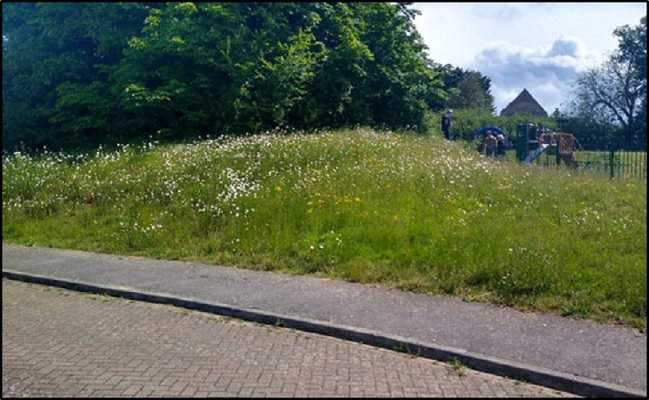
The following image shows an example of strips cut to either side of the path:
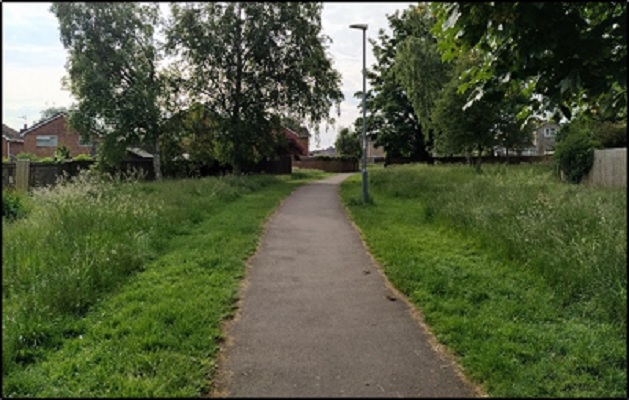
Why are we doing this?
Cutting grass may be an easy way to keep open spaces looking tidy, but it isn’t very good for wildlife or the environment.
We also made a commitment, when our Biodiversity Action Plan was approved, to increase the number of wildflower areas across both districts.
The aim of this is to help increase our local wildlife and plant life and support the environment.
What are the benefits?
Wildflowers provide food for many insects, including bees and butterflies.
Longer grass and flowers provide a home for wildlife.
Longer grass helps hold back rainwater which reduces flooding.
Longer grass also helps stop the ground drying out so quickly during warmer weather, as it stays cooler than short grass.
Cutting less often means we use less fuel too, which is better for the environment.
The wildflowers can make verges and open space more attractive and interesting.
Where are we doing this?
We’ve already introduced wildflower meadows in towns and villages across Babergh and Mid Suffolk.
You can find out more using our interactive mapping service and following the instructions below:
Click on the three lines in the top left corner of the map:
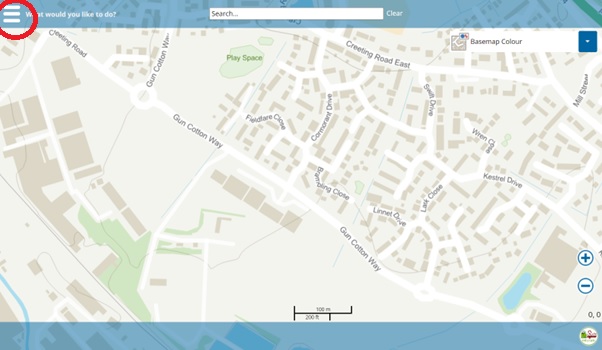
From the dropdown menu, select map Features:
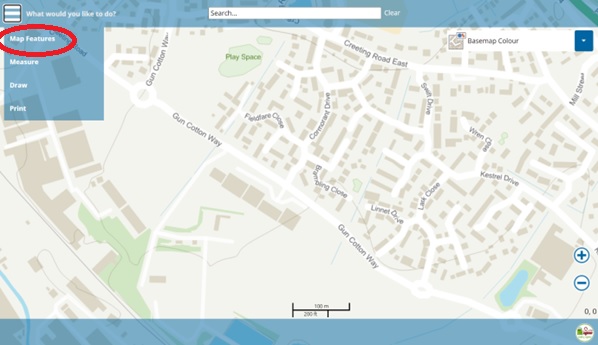
Then select Public Realm Maintenance Contracts:
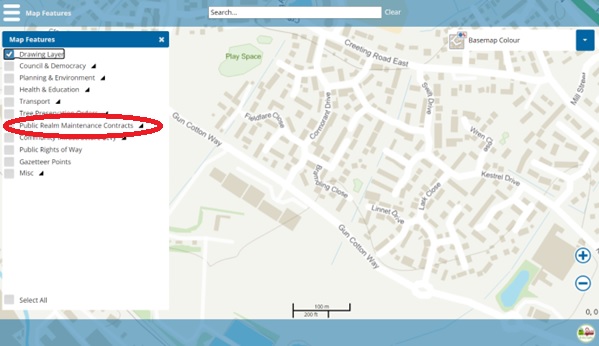
Finally, select the Meadows box and they appear as hatched areas:
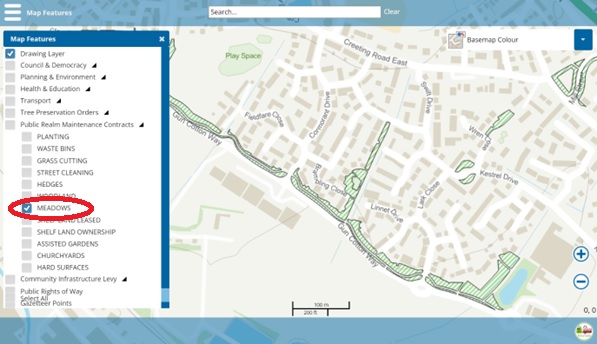
The map will be updated as we add more areas.
We hope to gradually do this in many more places over the coming years.
If you area isn't shown, there's more information about how you can share your location with us at the bottom of this page.
How can I tell if an area is one of your wildflower areas?
Look out for our 'we're letting it grow to help the flowers show' signs during the summer!
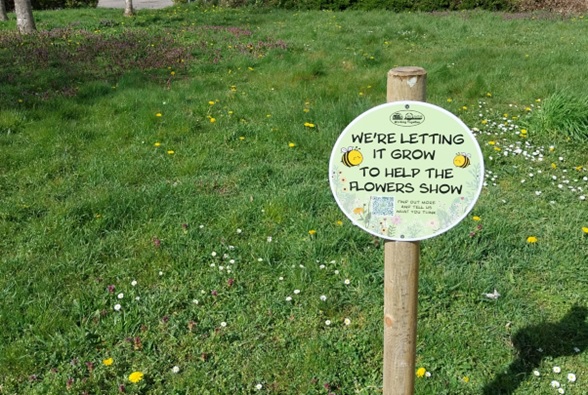
Will the grass ever be cut again?
Yes!
While we’re leaving the grass to grow, we will be cutting the areas at the end of summer and again in the spring.
And of course, were required, we'll be maintaining our wildflower areas in between cuts too, keeping path edges short and cutting paths through some areas.
This will all done in a way that will support the growth of more wildflowers when we leave the grass to grow again over coming summers.
Does it mean less cost for the councils?
No.
We've had to invest in a new mower which enables us to do the special cuts needed to encourage wildflower growth.
With the support of our dedicated Biodiversity Project Manager, our Grounds Maintenance Team will also continue to manage these spaces just as carefully as we did before, and have more time on other spaces.
What can I do?
Tell us what you think!
Do you enjoy seeing more colourful wildflowers and wildlife, or do you like short grass?
Are there places near you you’d like us to try this on?
Are there more things you think we could do with our verges and open spaces that would help both wildlife and the environment?
Let us know – we’d love to hear from you.
You could also encourage your local town or parish council, or a community group or club which has publicly accessible land to apply to our trees, hedgerows and wildflowers scheme.
